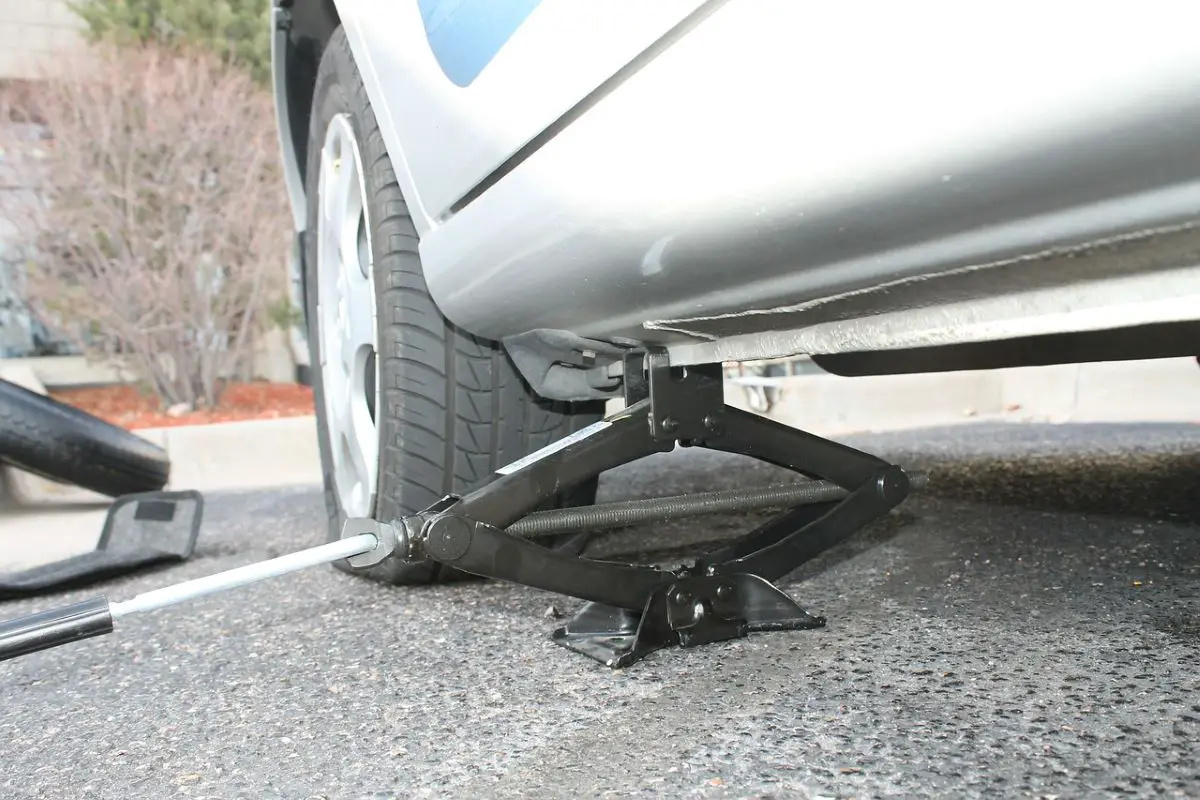If you’ve been driving for a while, you’ve likely had to use your spare tire at least once. Maybe it was a flat tire or something more serious that led to the need for an emergency tire change.
You need to get back on the road as quickly as possible, but there are some things you should know about spare tires. Here are some questions and answers about them.
Can you drive on a spare? The quick answer is that you can drive on a spare tire for about 50 to 70 miles, but the official answer is more complicated than that. Spare tires are designed to be used only temporarily, but many factors determine how long your spare can safely stay on your vehicle. Driving on a spare tire is something you should only do in emergencies and only for short distances.
Is It Safe To Drive On A Spare Tire?
Yes, it is safe to drive on a spare tire. Though you should try to get your full-size tire repaired or replaced as quickly as possible.
In fact, in some cases, driving on a spare tire for an extended period can damage the tire and make it unsafe to use. Spare tires are usually smaller than a car’s standard wheels because they have to fit underneath the vehicle.
However, if you’re planning on driving far or at high speeds, you should leave the spare tire behind and purchase a new one. The reason? Driving at high speeds causes more wear and tear on tires. This means that a balding spare will lose tread even faster when you’re going 70 mph down the highway! Additionally, spare tires are often not rated for speeds above 55 mph.
If you’re unsure how fast or far you can drive on a spare tire, call the number listed in your owner’s manual.
Can You Drive On A Flat?
It’s pretty common for people to ask how far they can drive on a flat tire. These are the two things we recommend:
If you’re lucky enough to be in a spot where you can change your tire, do it immediately. Don’t waste time figuring out if you can go farther and risk having to pay for a tow.
If you’re stuck in traffic, at least turn on your hazard lights. This will let other drivers know there’s something up ahead. That way, they’ll be prepared to stop and avoid hitting your car or running into anything that you’ve had to leave in the road behind you.
Remember, never ignore a flat tire. If you have one, pull over right away so that no one gets hurt or worse!
How Far Can You Drive An A Full-Size Spare Tire?
The answer to that depends on several factors.
First and foremost, you’ll need to understand the size of your car’s spare tire. Most new cars come with a compact or “donut” spare tire. These are smaller in size than your other tires, and as such, you can’t drive a long distance on them. They’re only meant for temporary use. Many donuts also have a maximum speed limit of about 50 mph. So even if you could make it the whole way to your destination on a donut spare tire, it would take you a long time to get there!
However, if you have a full-size spare tire, the limitations are less severe. You can drive further on a full-size spare than you can on a donut, but usually at reduced speed. You will likely only be able to drive up to 60 miles per hour on your full-size spare.
What Are The Different Types Of Spare Tires?
A spare tire is a secondary tire that you can use to replace your damaged tire. Your car may come with one, or you may need to purchase one separately, depending on the make and model. The type of spare tire you have will determine how long you can drive on it and how long it will take for your vehicle to be up and running again. If you need to change your tire.
There are three main types of spare tires: full-size, donut and run-flat tires.
Full-size Spare
Full-size spares are identical to the tires that came with your vehicle when you first purchased them. You can drive at normal speeds for as long as you need to on this type of tire. They typically last until your next oil change or tune-up is due. They take a little longer to install, but once it’s done, they will get you back to driving in no time!
Donut Spare
Donut spares are smaller than full-size spares. They still work well in situations where there might not be enough room for a full-size replacement tire like parking garages or tight spaces between buildings on campus.
Run-Flat Tire
A run-flat spare tire is a type of tire that can be driven on for some distance even when it has been punctured. This is done by constructing the tire with a stronger sidewall. This allows it to carry weight even when the inner tube has been damaged. Run-flat tires are commonly used on military vehicles and often installed on passenger vehicles.
Unlike traditional spare tires, which need to be inflated before being used to replace a flat, run-flat tires can simply be installed. This eliminates the need for a spare tire and gives drivers additional peace of mind, as they will not have to wait for roadside assistance or another driver to change their flat.
How Often Should You Check Your Spare Tire?
The spare tire that you carry in your car is not something you will use often. When it is brand new, you may never use it at all. But despite how infrequently you may need to use your spare tire, it still needs to be checked every once in a while. If you neglect your spare tire, it could wind up being useless if you do ever need to use it.
How To Check Your Spare Tire?
When checking the pressure of your spare tire, make sure that the pressure is correct for what it recommends in your vehicle’s manual. You can find this information by looking at the door frame of your car (where the door latches when closed) or in the glove box or trunk of your vehicle. When checking the air in your tires, there are usually markings on their side indicating the ideal amount of pressure for each one.
Conclusion
Maintaining spare tires is an integral part of safe driving. You never know when you might get a flat or damage your tire. Having a spare can ensure that you are not stranded at the side of the road.
If you do not have a spare tire, you may have to wait for help to arrive—which could take hours. It also means that you will need to spend money getting your car towed to the nearest service station or dealership. Even if you have roadside assistance, it is often faster and less expensive to change your tire yourself.
You May Like These Articles As Well:
What Color Is Transmission Fluid? Everything You Need To Know
Why Is My Blinker Blinking Fast? Troubleshooting This Car Problem
 Being Human
Being Human





